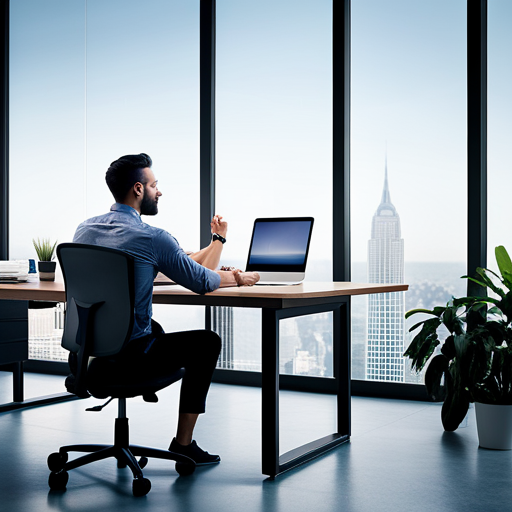Hey there, desk dweller! Are you tired of feeling like a human pretzel after a long day at the office? Well, fear not, because we’ve got the ultimate guide to office stretching just for you!
You see, sitting at a desk all day can really take a toll on your body. Your neck feels like it’s permanently stuck in an awkward position, your wrists ache from typing away, and your back is as stiff as a board.
But fret not, for we have a solution that will have you feeling like a nimble ninja in no time!
In this guide, we’ll show you a series of simple exercises that you can do right at your desk to keep your body feeling loose and limber.
From neck stretches and shoulder rolls to wrist and hand exercises, we’ve got you covered.
And let’s not forget about those hip stretches and chair squats to get your blood flowing!
So, whether you’re a seasoned desk warrior or just starting out, this guide is here to help you combat the perils of office life.
Get ready to say goodbye to stiffness and hello to flexibility.
Let’s get stretching, my friend!
Key Takeaways
- Neck stretches and shoulder rolls improve mobility and reduce stiffness
- Wrist and hand exercises help prevent carpal tunnel syndrome and strengthen muscles
- Seated forward fold and spine twists provide stretches for the back, shoulders, and hamstrings
– Hip stretches and chair squats improve hip mobility and lower body strength
Neck Stretches and Shoulder Rolls
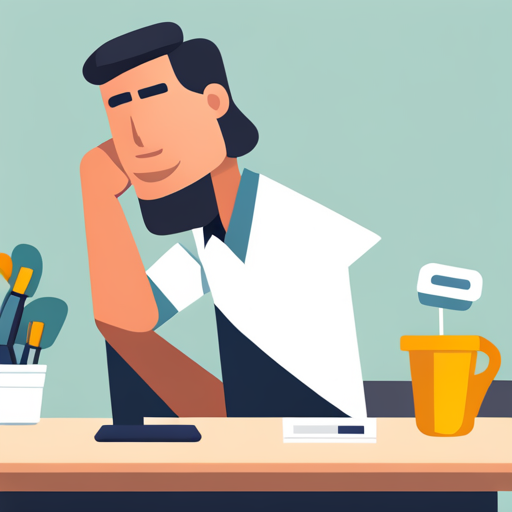
As you sit at your desk, take a moment to relieve tension by gently rolling your shoulders and stretching your neck. You can do simple neck stretches by tilting your head to the right and left, as well as up and down. This helps to improve neck mobility and reduce stiffness.
To enhance shoulder mobility, try shoulder rolls. Roll your shoulders forward and backward in a circular motion, allowing your muscles to relax and your stress to melt away. These exercises may seem simple, but they can make a big difference in how your body feels throughout the day.
Now, let’s move on to the next section about wrist and hand exercises.
Wrist and Hand Exercises
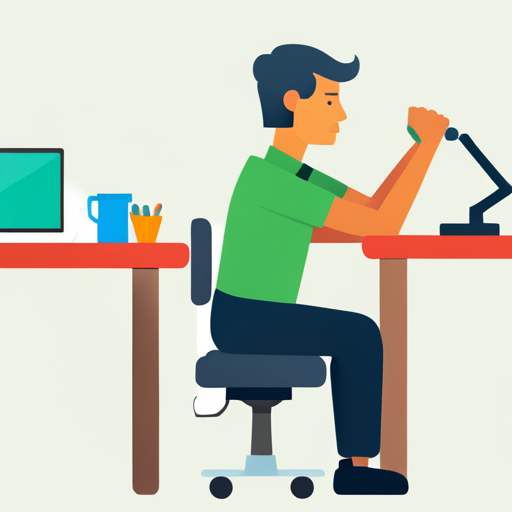
Get your wrists and hands in top shape with these quick and easy exercises. First, let’s talk about carpal tunnel prevention. It’s important to keep your wrists straight and avoid bending them too much when using the computer. You can also do finger exercises to strengthen your hand muscles.
Start by spreading your fingers wide apart and then bringing them back together. Repeat this a few times. Another exercise is to make a fist and then open your hand wide, stretching your fingers as far as you can. Do this a few times too.
Now, let’s move on to the next section, where we’ll learn about seated forward fold and spine twists. It’s time to give your whole body a good stretch!
Seated Forward Fold and Spine Twists
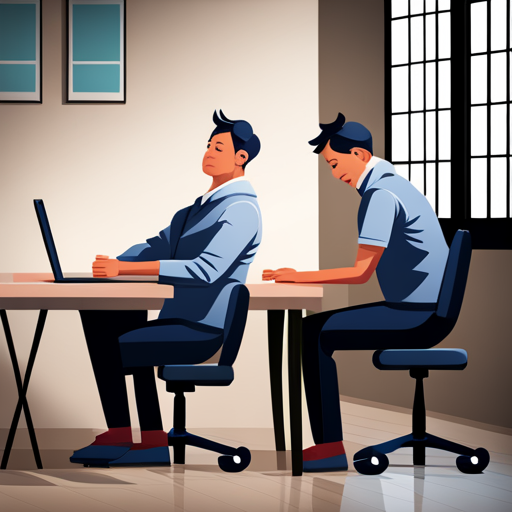
Settle into a comfy seat and let your body gently fold forward, giving your spine a nice stretch. This seated forward fold is great for desk workers like you. It helps to release tension in your back, shoulders, and hamstrings. Plus, it can calm your mind and relax your body.
To make it more interesting, you can try different variations of spine twists. Just twist your upper body to the left and right while keeping your lower body stable. This will stretch your back and improve your spinal mobility.
Now, let’s move on to the next section where we’ll explore hip stretches and chair squats. These exercises will help you loosen up your hips and strengthen your lower body.
Hip Stretches and Chair Squats
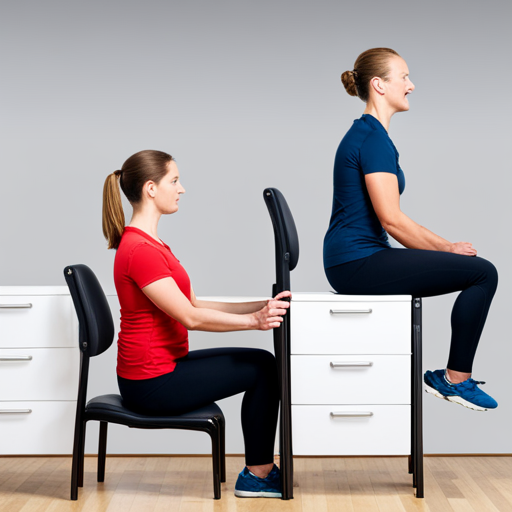
Let’s dive into some hip stretches and chair squats to improve flexibility and build strength in your lower body. Hip mobility is important for maintaining good posture and preventing lower back pain.
To stretch your hips, sit on the edge of your chair and cross one ankle over the opposite knee. Gently press down on the raised knee to feel a stretch in your hip. Hold for 15-30 seconds and switch sides.
Chair squats are great strengthening exercises for your legs and glutes. Stand in front of your chair, bend your knees, and lower yourself down towards the seat. Then, push through your heels to stand back up. Repeat this movement for 10-15 reps.
Now that you’ve worked on your lower body, let’s move on to eye and neck exercises for reducing eye strain.
Eye and Neck Exercises for Reducing Eye Strain

Performing regular eye and neck exercises can be a game-changer for reducing eye strain, as they act as a refreshing oasis amidst the desert of long hours staring at screens. Here are some eye relaxation techniques and neck and eye alignment exercises that can help you combat eye strain:
- Close your eyes tightly for a few seconds, then open them wide. Repeat this a few times to give your eyes a break.
- Look up and down, then side to side, slowly moving your eyes to stretch the muscles and improve circulation.
- Gently massage the area around your eyes with your fingertips to relieve tension.
- Slowly rotate your neck clockwise and then counterclockwise to release any stiffness or tension.
- Tilt your head to one side and slowly roll it forward and backward to stretch the neck muscles.
By incorporating these simple exercises into your daily routine, you can give your eyes and neck some much-needed TLC and reduce the strain caused by long hours in front of a screen.
Frequently Asked Questions
What are the benefits of neck stretches and shoulder rolls for desk workers?
Neck stretches and shoulder rolls have benefits for desk workers. Stretching regularly can help you feel better and prevent discomfort. Ergonomics is important to consider to ensure your workspace is set up correctly.
How often should wrist and hand exercises be performed throughout the workday?
To keep your wrists and hands healthy, do wrist and hand exercises regularly. Prevent injuries at work by performing them frequently. Stay safe and strong by taking breaks and stretching throughout the day.
Are there any precautions or modifications that should be taken when doing seated forward fold and spine twists?
When doing seated forward fold and spine twists, be careful not to strain your back or neck. If you have any existing injuries or conditions, talk to a doctor before attempting these stretches. You can also modify the poses by bending your knees or using props for support.
Can hip stretches and chair squats help alleviate lower back pain caused by sitting for long periods?
Hip flexor stretches and chair squats can help relieve lower back pain from sitting. Hip stretches loosen tight muscles, while chair squats strengthen the core. Standing at a desk also has benefits.
How do eye and neck exercises specifically help reduce eye strain in desk workers?
Do neck and shoulder stretches, and hand and wrist stretches help reduce eye strain? Yes, they do! Moving your body can relieve tension and improve blood flow, making your eyes feel less strained.
Conclusion
So now you know, dude! Stretching at your desk is super important if you wanna stay healthy and feel good.
Remember to take breaks and do those neck stretches and shoulder rolls like a boss.
Give your wrists and hands some love with those exercises, and don’t forget to do that seated forward fold and spine twists to keep your back happy.
Get those hips moving with some stretches and chair squats, and don’t let your eyes strain, bro.
Do those eye and neck exercises and you’ll be golden.
Stay chill and stretch it out, my friend!
